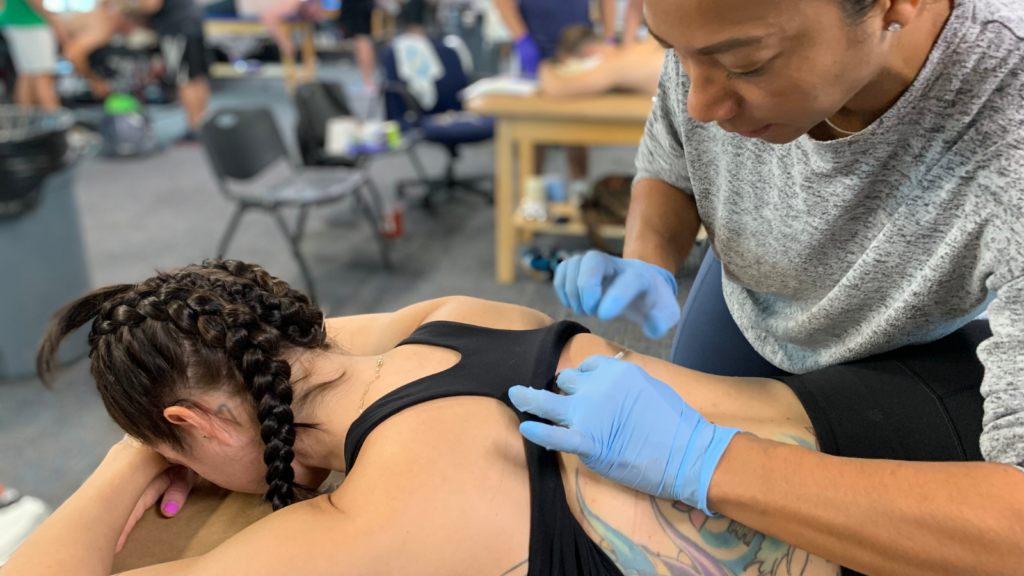Dry Needling the Spine: A Closer Look at Safety and Technique
Thoughts were stimulated by :Williams, Christi L., Sue E. Curfman, Stacey R. Lindsley, Christian R. Falyar, and Ryan C. McConnell. “Inferior-Medial Dry Needling at the Thoracolumbar Junction: A Cadaveric Study.” International Journal of Sports Physical Therapy 19, no. 10 (October 1, https://doi.org/10.26603/001c.123477.
When Structure & Function Education® teaches any technique, we always cover the safety considerations and anatomy information required to needle appropriately. This recent article shed some insight on the safety of dry needling close to the spine. While dry needling has grown in popularity as a treatment for musculoskeletal discomfort, there are still concerns about potential consequences, especially when treating near safety-conscious anatomic areas such as the spine. The recent release of a cadaveric study in the International Journal of Sports Physical Therapy provides new light on this problem, so I thought I’d share the key findings with you.
Study Summary
The study explored the safety of a dry needling approach targeting the multifidus muscle at the thoracolumbar junction. Belmont University researchers utilized ultrasound assistance to determine the path of a dry needle into a human cadaver. The goal was to recreate a previously described procedure but see if it could breach the ligamentum flavum and penetrate the spinal canal.
Methods: A female cadaver underwent ultrasound-guided dry needling. A 0.30 x 40 mm needle was placed 1.9 cm lateral to the T12 spinous process with an inferior-medial orientation.
Findings: The study found that the needle may pass through the ligamentum flavum and enter the spinal canal with a precise inferior-medial needle angulation of 33 degrees medial and 18 degrees inferior.
Significance: This study emphasizes the importance of precise needle placement and the potential benefit of ultrasonic guidance in dry needling, especially in parts of the spine where inadvertent penetration is a considerable danger. The study underlines the importance of a cautious approach and ongoing research to improve best practices and reduce the risk of adverse outcomes.
Personal Insights and Implications
This study emphasizes the importance of continued education and refining dry needling procedures near the spine. While dry needling is a practical therapy choice for many patients, it is critical to carefully examine anatomical landmarks and the potential dangers associated with spinal dry needling. While they make a case for ultrasound guidance, I would argue that most practitioners lack access to high-quality/high-resolution ultrasound equipment and are unaware of how to utilize it properly, making that solution practically unachievable. However, practitioners should be aware of the anatomical difficulties in this area to treat it safely and successfully without using ultrasound assistance. Contrary to popular belief, more medial insertion toward the spine processes is not safer than an inferiorly directed needle directed within the width of the transverse processes of the vertebrae. Also, while a .40 mm needle is not excessively long, might it be prudent to use a .25 or .30mm needle in the spinal region they are needling?
Furthermore, the study highlights a broader issue within the field: the need for clear guidelines and standardized techniques to improve the safety profile of dry needling. Open communication and continued research are essential to ensure that dry needling remains a safe and effective treatment option.
Conclusion:
This research helps understand dry needling safety and technique, particularly in the thoracolumbar region. It emphasizes the need for good technique and continual professional development for practitioners to improve patient safety and treatment outcomes. The hazards connected with dry needling can be mitigated via proper training. If you are a patient, talk to your therapist about the dangers of this technique and their training in dry needling for your condition. If you are a practitioner looking to learn dry needling, you can discover a Structure & Function Education® foundation course near you; enroll in an open course today at www.structureandfunction.net.



